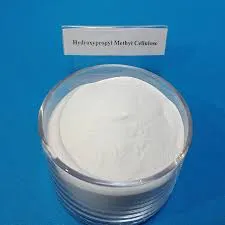
Nov . 21, 2024 05:05 Back to list
redispersible polymer powder manufacturing process
Understanding the Manufacturing Process of Redispersible Polymer Powder
Redispersible polymer powders (RDP) are a vital component in various construction materials, including dry mortar, adhesives, and paints. These fine powders are water-soluble and play a critical role in enhancing the properties of formulations, imparting improved adhesion, flexibility, and durability. The manufacturing process of RDP is complex but essential for producing high-quality products that meet various industry needs.
Raw Materials
The manufacturing process begins with selecting the appropriate raw materials. Typically, the primary components are thermoplastic polymers such as polyvinyl acetate (PVAc), ethylene-vinyl acetate (EVA), and styrene-acrylic copolymers. These materials are chosen based on the desired properties of the final product. Additives like stabilizers, emulsifiers, and pigments may also be incorporated to enhance performance characteristics and dispersion stability.
Emulsion Polymerization
The first major step in the production of RDP is emulsion polymerization. In this process, the chosen monomers are dispersed in water using surfactants to create an emulsion. Under controlled conditions of temperature and pressure, a polymerization initiator is added to initiate the reaction. As the reaction progresses, the monomers link together to form polymer chains, resulting in a latex suspension. This step is critical as it defines the molecular weight and the properties of the final polymer.
Regulating the emulsion’s pH, temperature, and addition rates is vital to ensuring a uniform particle size and preventing coagulation. The resulting latex should have a consistent viscosity and stability, which are crucial for redispersible powders.
Drying Process
Once the emulsion has been polymerized and the desired properties achieved, the next step is drying the latex to produce a powder. Several drying methods can be used, with spray drying being the most common. In spray drying, the latex is atomized into fine droplets in a hot air chamber. As the water evaporates rapidly, the droplets solidify, creating a fine powder.
Alternatively, freeze-drying can be employed, which involves freezing the latex and then reducing the surrounding pressure to allow the frozen water in the latex to sublimate. While freeze-drying preserves more of the polymer properties, it is more energy-intensive and costly than spray drying.
redispersible polymer powder manufacturing process

Redispersibility and Quality Control
After drying, the polymer powder is assessed for redispersibility. This is the primary feature of RDP, allowing the powder to reconstitute in water after drying. To evaluate this characteristic, a sample of the powder is mixed with water, and its ability to disperse is tested. Various factors, such as the polymer's molecular weight, particle size, and the drying process used, can influence redispersibility.
Quality control during manufacturing is critical to ensure the consistency and performance of the RDP. This typically involves rigorous testing of the physical and chemical properties of the powders, such as particle size distribution, moisture content, and stability under different environmental conditions.
Packaging and Storage
After passing quality control tests, the redispersible polymer powder is packaged for distribution. Appropriate packaging is essential to protect the product from moisture and contamination. Generally, bags or containers made of moisture-resistant materials are used to store the powder. Proper storage conditions are critical, as exposure to humidity can cause clumping and reduce the product's effectiveness.
Applications
Redispersible polymer powder is utilized in various industries, particularly in construction. In dry mortars, RDP enhances adhesion, flexibility, and water resistance, making the final product more durable and reliable. Its use in adhesives and sealants further improves performance, allowing for better bonding properties. Additionally, RDP finds applications in paints and coatings, improving wet adhesion and film formation.
Conclusion
The manufacturing process of redispersible polymer powder is a multifaceted procedure that requires meticulous control and precision to ensure a high-quality product. From raw material selection to the final packaging, each stage affects the performance of the powder. As the demand for advanced construction materials continues to grow, understanding the RDP manufacturing process will be crucial for manufacturers aiming to produce superior products that meet the evolving needs of the industry.
-
Versatile Hpmc Uses in Different Industries
NewsJun.19,2025
-
Redispersible Powder's Role in Enhancing Durability of Construction Products
NewsJun.19,2025
-
Hydroxyethyl Cellulose Applications Driving Green Industrial Processes
NewsJun.19,2025
-
Exploring Different Redispersible Polymer Powder
NewsJun.19,2025
-
Choosing the Right Mortar Bonding Agent
NewsJun.19,2025
-
Applications and Significance of China Hpmc in Modern Industries
NewsJun.19,2025







